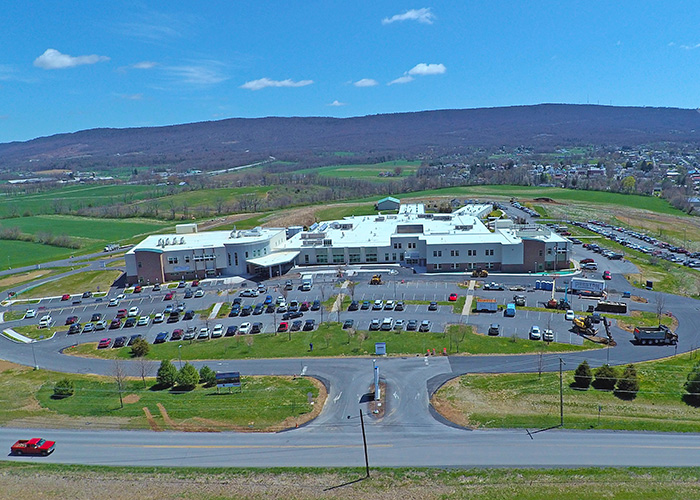Healthcare Design Virtual Reality, Drones and Design-Assist
Provide a Sensation of Being in the Space

Futuristic Healthcare Design is evolving due to innovative mechanisms that make the process simpler, more cost effective and faster. These mechanisms include healthcare design virtual reality, drones and design-assist software. Healthcare Architects and Engineers are using these tools to gather information for clients especially in the conceptual and planning stages. Entire project teams are now able to capture the visualization, atmosphere and inner-workings of infrastructure before construction has even started and better than ever before.
Virtual Reality
Technology has come so far in the world of healthcare design virtual reality and that immensely benefits the process for healthcare facilities. 3D modeling, animations, renderings and panoramas all contribute to realistic visualization of spaces for owners and the project team. Not only is the space visual but some of this technology actually provides the sensation of being in the space. For example, JPT Architects allows clients to view their project space in the conceptual stage with a virtual reality headset. Once, the headset is put on, the envisioned space comes to life because the client is able to look around the virtual space as if they were actually there. Additionally, JPT Architects provides animations and renderings that show what a room will look like at all times of the day and night. During time differences, the sun and moon give off lighting through the windows that effect the look and overall feel of the room. Not only is this helpful in deciding if a client likes the space but it builds momentum and gets the client excited for what is to come for their project.
Drones
Drones, also known as unmanned aerial vehicles (UAVs), offer a bird’s eye view of building sites and are able to take breathtaking photographs. Not only can drones give healthcare designers amazing photographic opportunities to highlight their work but they are able to seize dimensional data in real-time. Field data is able to be merged and integrated at an accelerated rate with 3D modeling software. Additionally, drones can be used to inspect structures, monitor job sites and analyze data. For example, JPT Architect’s Photographer uses a drone as our eyes in the sky to snap new and exciting ways for our clients to see and showcase their projects. Click here to take a look at JPT Architect's YouTube page to drone-view videos of our projects.
Design-Assist Programs
Building Information Modeling (BIM) software is a very popular design-assist program that allows all project team members to integrate building systems into the project together. Whether the team member is an architect, MEP engineer, structural engineer, contractor or subcontractor, BIM allows a viewpoint into what pipes, electrical conduit, ducts, valves, drains, vents, etc. are running through the building. All project team members can then implement new systems together and coordinate project goals and strategies within the design-assist platform. The impact that BIM has had on the AEC industry significantly improves collaboration, saves time, reduces costs and allows for almost flawless design practices. For example, JPT Architects offers BIM as part of our basic service to every client that we have. Using BIM gives us the most efficient coordination of building systems and the most effective communication with project team members. Click here to check out JPT Architect's Executive Guide on BIM Modeling Adoption: The Thought Behind the Design.
